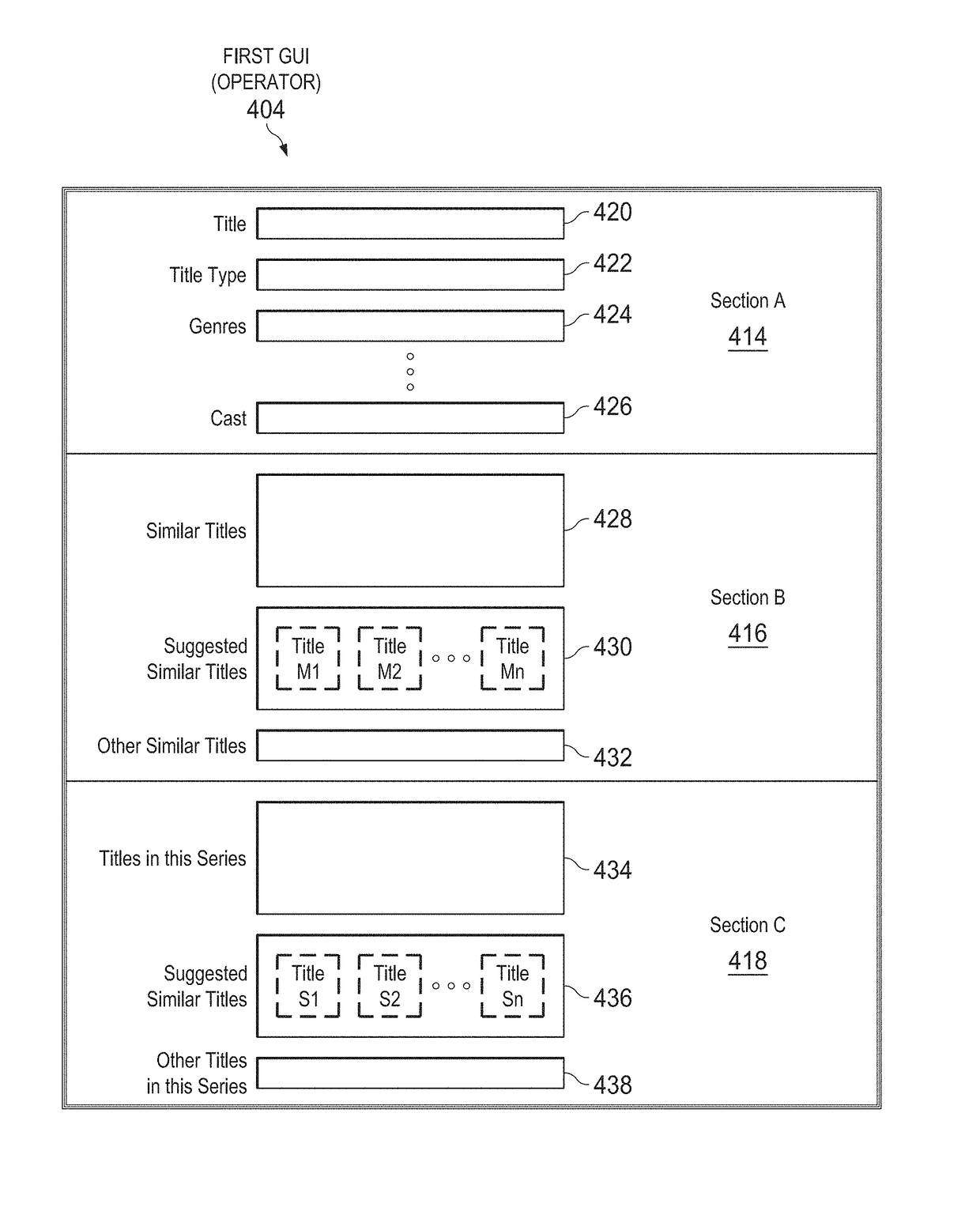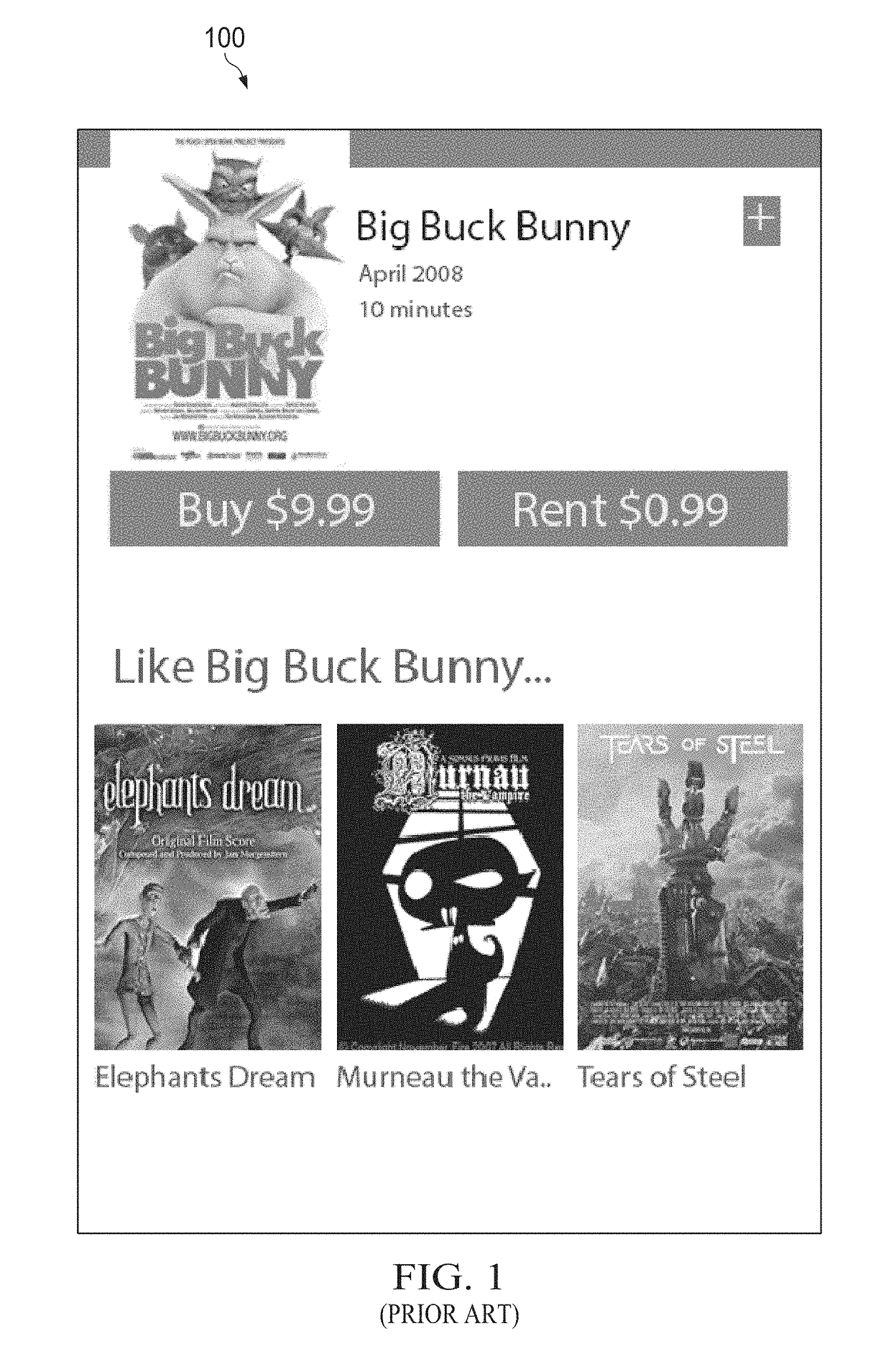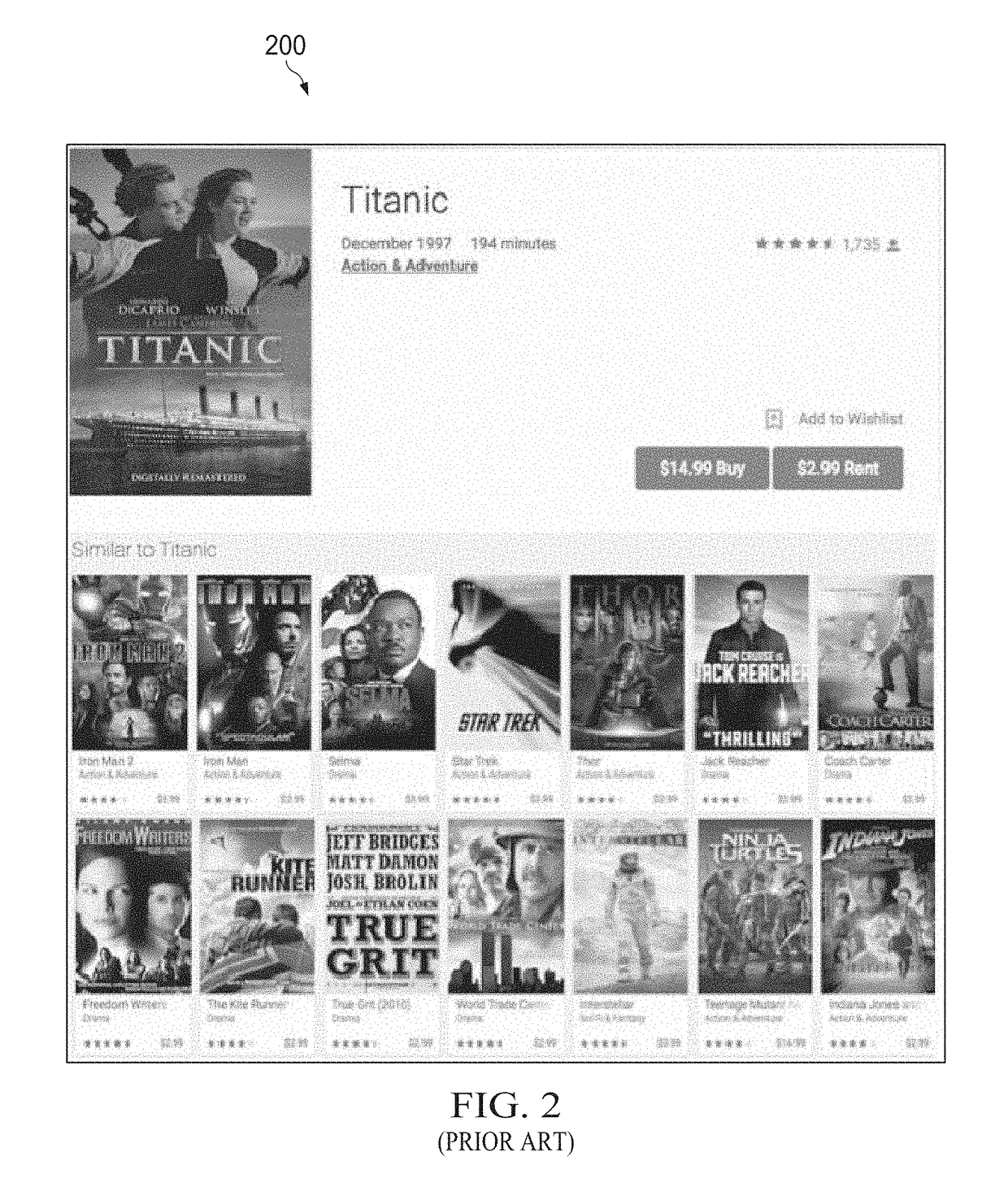Expert-assisted online-learning for media similarity
a technology of media similarity and online learning, applied in the field of experts-assisted online learning for media similarity, can solve the problems of user choice, manual curation approach is possible but highly infeasible, and manual curation is extremely difficult, if not completely impossible, so as to improve customer experience, improve operator experience, and increase diversity
- Summary
- Abstract
- Description
- Claims
- Application Information
AI Technical Summary
Benefits of technology
Problems solved by technology
Method used
Image
Examples
example implementation
[0105]Although the described solutions may be implemented in any appropriate type of system supporting any suitable communication standards and using any suitable components, particular embodiments of the described solutions may be implemented in a network that includes a server or a collection of servers, a network such as the Internet, local area network, or wide area network, and at least one client. The system 400, the recommender system 402, the storage device 410 etc. . . . can be implemented by a data processing system. The data processing system can include at least one processor that is coupled to a network interface via an interconnect. The memory can be implemented by a hard disk drive, flash memory, or read-only memory and stores computer-readable instructions. The at least one processor executes the computer-readable instructions and implements the functionality described above. The network interface enables the data processing system to communicate with other nodes (e....
PUM
 Login to view more
Login to view more Abstract
Description
Claims
Application Information
 Login to view more
Login to view more - R&D Engineer
- R&D Manager
- IP Professional
- Industry Leading Data Capabilities
- Powerful AI technology
- Patent DNA Extraction
Browse by: Latest US Patents, China's latest patents, Technical Efficacy Thesaurus, Application Domain, Technology Topic.
© 2024 PatSnap. All rights reserved.Legal|Privacy policy|Modern Slavery Act Transparency Statement|Sitemap



